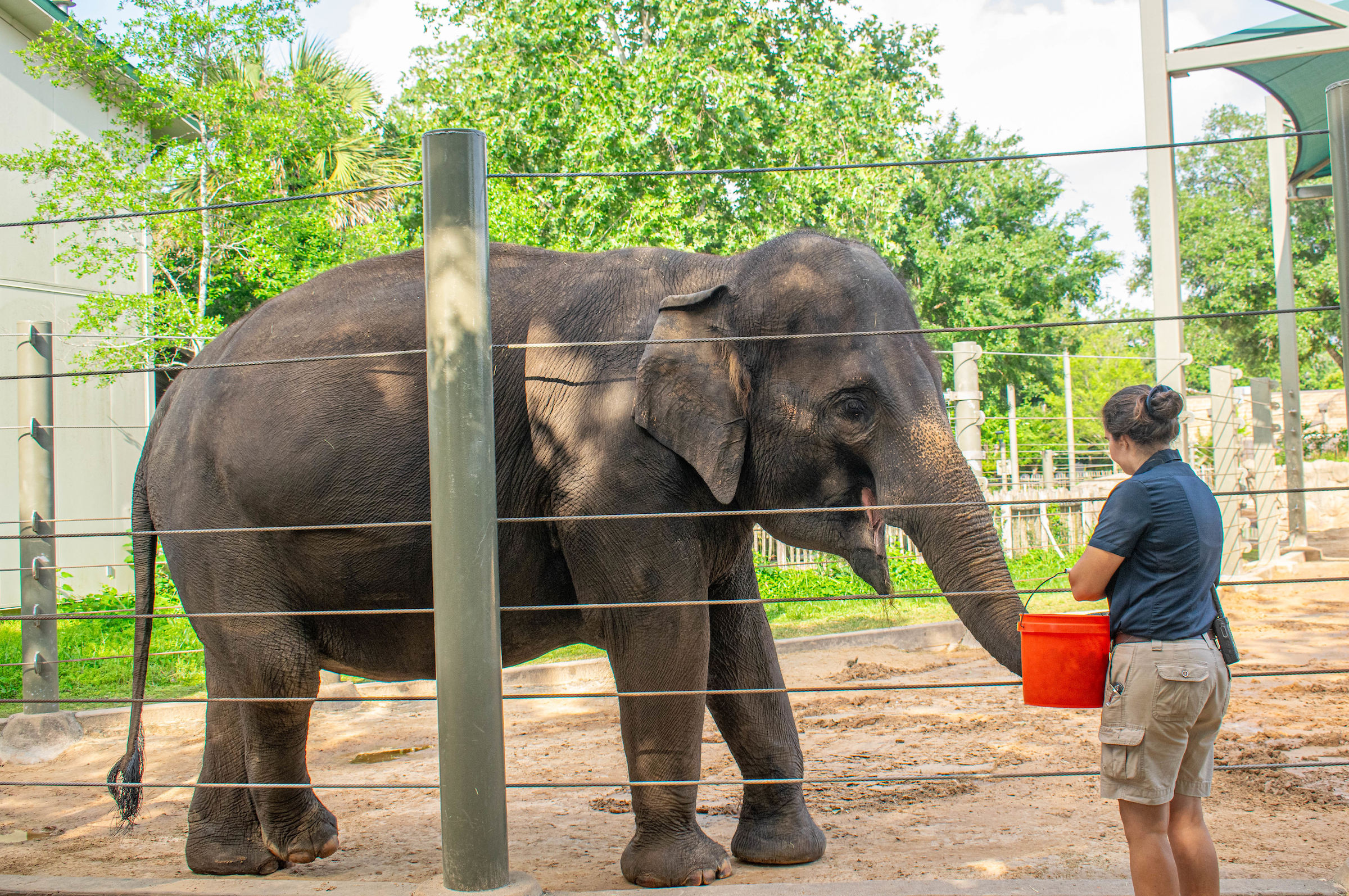Summary of From Our Herd to Yours: Happy Mother’s Day:
The Houston Zoo is excited to announce that an Asian elephant named Shanti, aged 33, is expecting a baby by the end of 2024. The father is 58 years old and lives in Thailand. The animal care team closely monitors the pregnancy, which typically lasts around 659 days or 22 months for elephants, including weekly blood draws to ensure the health of Shanti and her forthcoming calf. The sex of the calf will remain unknown until birth, as ultrasounds cannot determine it. Shanti, already a mother to four, is known for her attentive care to her calves. The birth is expected to occur in the McNair Asian Elephant habitat cow barn, with a comprehensive post-natal plan to ensure the health and well-being of both mother and calf, including a bonding period before introducing the newborn to the herd. Additionally, the Houston Zoo contributes to the conservation of wild elephants in Asia, with a portion of admission and membership fees supporting tracking and protection efforts led by conservationist Nurzhafarina “Farina” Othman and her team.
– The significant role of zoos in wildlife conservation and education.
– The fascinating process of elephant gestation and caretaking in zoos.
– Bridging the gap between zoo visitors and global conservation efforts.
– Insight into the Houston Zoo’s contributions to elephant conservation.
Zoos today are more than just places where people can see animals from around the world; they are vital centers for wildlife conservation and education. One poignant example is the Houston Zoo, where the anticipation of a new elephant calf highlights the intricate care zoos provide to their residents and the broader mission to conserve wildlife.
The arrival of a baby elephant at the Houston Zoo is a testament to the dedicated efforts in wildlife conservation and zoo management. Shanti, a 33-year-old Asian elephant, is pregnant, with a due date towards the end of 2024. This upcoming birth is significant for the zoo and elephant conservation efforts worldwide. The father, Thailand, a 58-year-old Asian elephant, contributes to the genetic diversity necessary for the species’ sustainability in captivity.
Elephant gestation is a prolonged process, with an average duration of 659 days or 22 months, marking it as one of the longest gestation periods in the animal kingdom. Interestingly, the calf’s gender remains a surprise until birth, as ultrasounds cannot determine the sex in elephants. Shanti’s pregnancy management showcases the zoo’s commitment to providing the best care for its inhabitants. Weekly blood draws to monitor Shanti’s health and hormone levels highlight the attention to detail involved in ensuring the well-being of zoo animals.
As an experienced mother, Shanti’s interactions with her calves offer guests a glimpse into the complex social structures of elephants. The zoo lets visitors see Shanti and her two youngest, Nelson and Joy, enhancing public understanding of elephant behavior and relationships. Furthermore, the story of Shanti’s older calves, Duncan and Baylor, illustrates the collaborative efforts among zoos to form suitable social groupings for animals, like the all-bachelor herd at Denver Zoo.
Besides the immediate care for Shanti and her calf, the Houston Zoo leverages this event to foster global conservation engagement. A portion of the zoo’s admission fees supports elephant conservation projects in Asia, such as the efforts led by conservationist Nurzhafarina “Farina” Othman. The zoo gathers crucial data on elephant movements by funding the placement of tracking collars on wild elephants. This information is vital for developing strategies to protect elephants and their habitats, demonstrating the zoo’s role in conservation beyond its gates.
The Houston Zoo’s work encapsulates the modern zoo’s dual mission: to care for animals and educate the public about conservation. Zoos connect people with the broader efforts to save endangered species and their environments. The story of Shanti and her forthcoming calf embodies this mission, serving as an educational tool to raise awareness and foster a connection between zoo visitors and wildlife conservation.
This narrative reveals zoo management’s complexity and conservation efforts’ importance. Zoos like the Houston Zoo are at the forefront of educational outreach and wildlife preservation, striving to make a measurable difference in the fight against species extinction. The anticipation of Shanti’s calf brings joy to those involved. It reinforces the critical role zoos play in educating the public and conserving the diverse species with whom we share our planet. Through meticulous care, comprehensive conservation efforts, and educational outreach, zoos contribute significantly to our understanding and preservation of wildlife.

